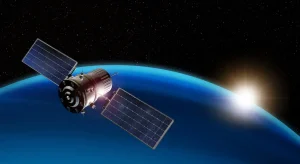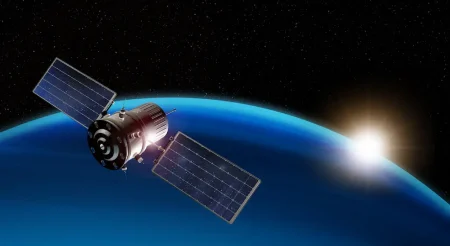Could you imagine a data centre sharing space with quarries that store cheeses, wine, and apples? You don’t have to imagine anymore, as it’s already happening.
The Dolomites in the Italian Alps are to be home to Intacture, Europe’s very first digital data centre being built deep inside the active underground San Romedio mine. Sitting just outside the city of Trento in the province of Trentino, this mine data centre is a 5MW facility that’ll even support colocation services beginning in 2026. Who knew that nature and cutting-edge technology would meet in such an interesting way?
Miracle Beneath The Mountain
Trentino DataMine, as the Intacture facility is also being called, is all poised to become Europe’s only digital data centre within an active underground mine and the first of its kind. It’s an ongoing project between a small bunch of privately owned enterprises and the University of Trento.
We’ve never heard of data centres being built in a mine because we think of mines as being humid places, and thus, not suited to data centres. However, in the case of the Trentino DataMine, what’s special is that the dolomite rock is absolutely dry and the mountain is extremely stable. In fact, the mine has long extracted dolomite employed in glass, ceramics, agriculture, and construction.
When the rock was removed, the dry 12 degrees Celsius environment proved to be perfect for storage, with the unique characteristics combining physical security with low energy and environmental impact.

The Sustainability and Security Standpoint
Above all, the data centre is being built in a space that formerly held a mining operation, which makes it all the more uniquely secure. The place where the data centre is being built is extremely stable in terms of hydrogeological safety, as it sits 100 metres (328 feet) below surface level, making the location secure.
So, it will be safe from physical threats such as bombs and earthquakes. What’s more, since the mountain temperature is at a constant of 12 degrees Celsius, the data centre’s cooling needs are reduced dramatically. By harnessing the power of passive cooling, the data centre significantly lowers its energy footprint as it won’t use water, which is a huge step forward for sustainable data centre operations.
Since Intacture’s cybersecurity threats also differ from those of traditional, above-ground data centres, it does well even from a data security standpoint. The sheer impenetrability of the rock will protect the data from cybersecurity concerns using a combination of electromagnetic waves and the highest levels of technology that will get updated constantly.
The naturally stable underground environment offers protection from everything: electromagnetic shielding, physical threats, and maximum hydrological and seismic safety.

Business Standpoint: Many Birds, One Stone
Before the idea of the Trentino DataMine was floated, the San Romedio mine was already home to nearly 1,200 wheels of cheese, 2.5 million wine bottles, and nearly 40,000 tons of apples! Placing a data centre right alongside organic products might seem illogical, but a unique ecosystem was developed for both of them to thrive alongside each other.
Named TERA, this one-of-a-kind underground ecosystem combined the Intacture data centre and food storage, thanks to the constant 12 degrees Celsius temperatures and lack of water infiltration. While the food products that require cooling systems can use the refrigeration from the related operational processes, the heat generated by the servers could be harnessed by other users of the mine that require heating.
Thus, the data centre is poised to serve multiple purposes. Plus, all business systems beneath the surface will jointly benefit from lower energy costs, enhanced security, storage space, and reduced environmental impact as there’s no traditional refrigeration waste.

The Promise of Underground Data Centres
Expected to begin operations by December 2025, the Trentino DataMine project is a landmark and turning point in utilising what were previously assumed as uninhabitable spaces for data centres. That being said, how much promise do underground data centres hold?
There are already quite a few data centres operating successfully underground. For instance, Western Pennsylvania is home to Iron Mountain’s WPA-1 facility, which lies 67 metres (220 feet) underground and uses a natural lake for cooling. In fact, the 2016-founded Lefdal Mine data centre in Norway is also built in a now-abandoned mine.
Hailed as one of the world’s craziest data centres, and also one of its most efficient, it’s set next to a deep, cold fjord in the Sogn og Fjordane region of Norway. The ample, stable supply of price leading hydroelectric energy also makes it a sustainable data centre.
So, the idea of subterranean data centres isn’t new. Construction is quicker, there’s natural physical protection, and the temperature is consistent. While challenges such as space restrictions, ventilation, and staff safety do exist, the fact is that facilities such as Intacture and the others could very well become an inspiration to developing locations for data centres in the future, transforming everything from mountains and mines to nuclear bunkers to protect what is now our ‘new gold.’
In case you missed:
- Guiding Light: How Photonics is Revolutionising Data Centres
- The Price Of Money: Can Cryptocurrency Go Green?
- Can Your Wi-Fi Betray You?
- Cryptocurrency Cloud Mining: How Does It Work?
- Keeping Your Tech Tidy: Tips For Data Backup And Safety
- Are Agentic AI Browsers Safe?
- Here for the ‘Pi’: Pi Day 2 Updates for the Cryptocurrency
- Crypto Heists: How To Keep Your Cryptocurrency Safe?
- The Pi Mainnet Launch – What It Heralds For The Pi Coin and Pioneers
- Edera: An All-Women Startup Revolutionising Cloud And AI Infrastructure Security










